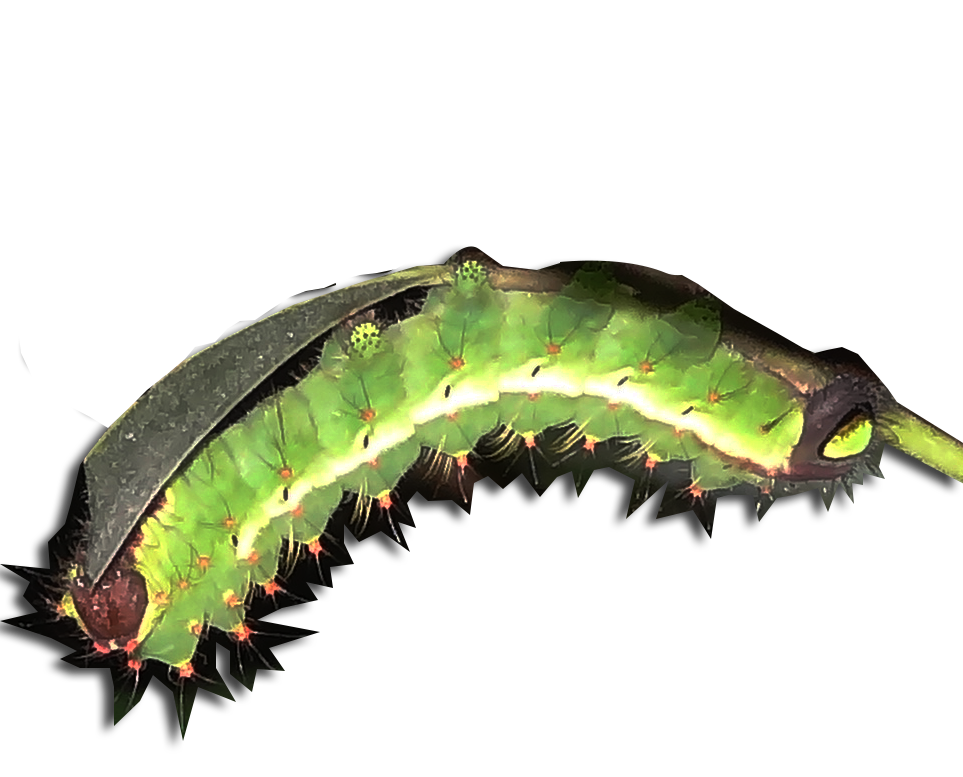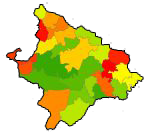Silkworm Food Plant Production Technology
Muga food plant production technology
Som (Persea bombycina) and Soalu (Litsaea polyantha Juss) are the two primary food plants of muga silkworm. Both the plants can be propagated through seeds. Seeds from selected healthy plants ensure production of healthy seedlings.
Nursery raising

Seed bed preparation
- Select well drained high land in a shady place.
- Plough the land up to 30 cm depth and level properly.
- Make 15 cm elevated beds of 2m x 1m.
- Maintain 30 cm gap between two beds.
- Apply 150 kg FYM and mix it thoroughly with the soil.
Seed collection and storage
- Collect mature seeds from the plants during May/ June.
- De- pulp the seeds in running water.
- Check the seed viability by floating test in water.
- Select the seed which settle at the bottom of water.
- Dry the seeds in shade.
Seed dressing and sowing
- Soak the seeds for 24 hours in water prior to sowing and treat the seeds with bavistin @ 2 g/kg seed.
- Sow 2 kg seeds per bed at a depth of 1 cm and 1.5 cm apart.
- Trichoderma/ Pseudomonas can be used for seed dressing @ 20 g/kg instead of bavistin.
Transplantation of seedlings to poly tubes
- After six months of sowing, transplant the seedlings to 20 cm long and 30 cm diameter poly tubes filled with 1:1:1 soil:sand:FYM.
- Irrigate once in a week.

Clonal propagation
- Soft branches of 4 cm length with single leaf and bud are treated with 300 ppm IBA for 12 hours and planted in moist sand bed. It ensures more than 50% rooting.
- Plant two months old juvenile shoots of 30-40 cm in 1:1:1 FYM:soil:sand medium during July-September for propagation of Som through juvenile cuttings.
- Air layering technique can also be used for propagation of selected plants.
Plantation in the main field
- Select well drained upland site.
- Plant during May to August.
- Plough the plot up to a depth of 30 cm.
- Make 30cm x 30cm x 30cm pits at a spacing of 3m x 3m.
- Fill the pits with 15 kg well decomposed FYM.
- Transplant 9 to 12 months old seedlings into the pits preferably on a rainy day.
Crop management practices
- Periodical weeding: manually or by using tiller.
- Apply FYM @ 15 kg/plant/year up to 4th year and 30 kg from 4th year onwards by making 15-20 cm deep ring around the plant.
- Apply N:P:K @ 43:62:17 g/plant up to 4th year and 87:125:33 g/plant from 4th year onwards by making 15-20 cm deep ring around the plant during April- May and September- October.
- Prune the plantation at 6 feet during 5th year.
- Practice periodical pollarding/ heavy pruning (step up/ step down) after rearing to maintain the canopy at 10-12 feet for effective management of rearing.
Source:
1. Package of practices of Muga, Eri and Mulberry Sericulture for North Eastern region of India, 2005, Central Muga Eri Research & Training Institute, Lahdoigarh, Jorhat, Assam.
2. Directory of Sericulture Technology 2008, Karnataka State Sericulture Research and Development Institute,Bangalore- 560 062.


